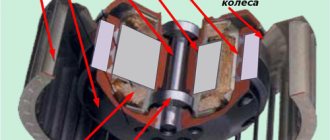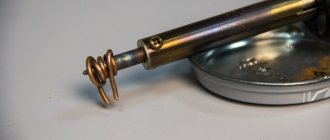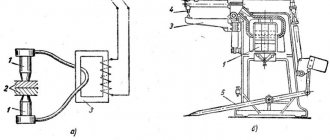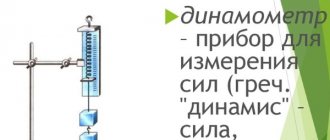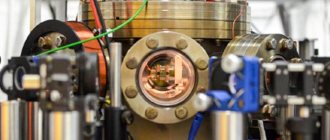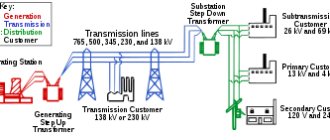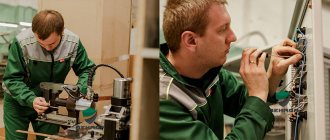The technology of applying other materials to the metal surface is considered popular in the manufacture of various products. The protective layer reduces the risk of rust and increases strength. Galvanic coating is a protective layer that protects the surface of a part from corrosion. After processing, the service life of the product increases and technical characteristics are improved.
Electroplating (Photo: pixabay.com)
Purpose of the galvanic method
Electroplating of metal on the surface is used to give them the properties of a specific material (silver, gold, nickel, etc.). Or if it is impossible to make an item from this material, and also if the price is unreasonably high.
For example, the application of chromium imparts hardness and anti-corrosion properties to plain steel. This technology was widely used to coat parts and mechanisms of machine tools. Chrome, in addition to being hard, gives a mirror-like shine and provides good protection against corrosion. Chrome is a hard but brittle metal, and it is not possible to manufacture parts and objects from it. Applying it to the surface by electroplating is a good alternative, as well as the opportunity to use the properties of chromium in everyday life.
The galvanizing process is carried out in special baths. An electrolyte containing salts of the metal that is deposited on the surface of the workpiece is poured into it. Compared to other methods, electroplating technology has advantages. When using, for example, a spray gun or other spraying devices (many organizations pass off this method of metallization as electroplating), it is impossible to achieve a perfectly even coating, high-quality adhesion and obtain the properties of metal on the surface. Usually, a non-conductive polymer layer is applied by spraying, in other words, paint, or a thin silver layer (for the reaction of a silver mirror, see the school curriculum), and on top is a transparent or colored varnish. The electroplating process makes it possible to obtain a uniform, dense, well-adhesive coating that has all the properties of the deposited metal.
Purposes of Metal Electroplating
Capacitor energy
What is electroplating for household use? Theoretically, it is not too difficult to find a specialized enterprise, conclude an agreement, and receive a finished product with official guarantees. However, the practical implementation of such ideas is associated with various difficulties:
- payment for services and loss of time;
- lack of good specialists or relevant industries nearby;
- the reluctance of performers to reconfigure existing equipment to perform a relatively small amount of work.
Only you can create a unique electroplating with special characteristics yourself. Technology opens up vast opportunities for individual creativity. As will become clear after studying the data presented in the publication, the technology can be reproduced with high quality without excessive costs.
Galvanic coating provides an impeccable appearance for products with complex shapes
The photograph clearly demonstrates the excellent quality of processing of the smallest details and hard-to-reach areas. In addition to improving aesthetic parameters, metal electroplating helps create a layer of low electrical resistance on the insulator.
Stainless steel is expensive. Instead, the resistance of products at high humidity is increased with the help of copper plating. The technology is suitable for the production of spectacular jewelry, decorative and functional furniture elements. With its help, miniature parts are strengthened and chemical neutrality is ensured.
In cosmetology, low-intensity galvanic discharge is used to improve the functional state of the skin and remove individual defects.
The essence of the technological process
Electroplating is used to produce thick technical and thin decorative layers of metal. The functions of electroplating are determined not by the layer that is applied to the surface, but by its characteristics: thickness, sublayer, preparation (etching, polishing).
The electroplating method is quite simple:
- The workpiece is carefully inspected for existing coatings and surface condition.
- Procedures for degreasing, etching and activating the surface of the part are carried out.
- The composition of the liquid electrolyte in which the product will be immersed is selected.
- Electrolyte is poured into a special bath to which one or two anodes are connected.
- A part connected to the cathode is lowered into it.
- An electric current is started.
- Under its influence, particles of metal salts are directed towards a negatively charged product.
- Metal is deposited on the entire surface of the product in a thin, uniform layer.
- After completion of the galvanic process, the supply of electric current is stopped, the product is removed, thoroughly washed and dried, and, if necessary, further processed.
Electroplating technology is simple, but requires special equipment and sufficient qualifications of performers.
The galvanic method is used to give mechanisms, contact groups or surfaces the properties of the applied metal. For example, the application of precious metals (gold, palladium, rhodium) to electrical contacts is used to impart chemical resistance, as well as maintain constant resistance. In this case, the species characteristics are not important. Of course, it is necessary to maintain the specified grain size of the coating, but this problem appears at metal deposit thicknesses of more than 20 microns. Thick galvanization gives high wear resistance and non-porous metals, which means the reaction properties of the base material can be ignored.
Technical Nickel electroplating coatings are made for units and items that experience constant mechanical stress. Nickel is a hard, inexpensive metal. It is applied to steel products that require corrosion protection.
Often there are lubricant coatings, the application of which does not so much take into account the chemical characteristics of the metal itself as it is necessary to ensure, for example, tight lapping of parts, but for some reason lubricants cannot be used. These are tin, lead, indium coatings. In these cases, the coating thickness ranges from 30 to 50 microns.
Our organization, 6 Micron LLC, provides services for the application of technical coatings to defense enterprises, enterprises in the space and aviation industries, and the electronics industry.
There are often cases when metals are applied only for decorative purposes or to add color (gold, silver, etc.), without requests for hardness or density.
Application
As a rule, electroplating is used for decorative finishing of metals in jewelry and the decorative metallurgical industry. The most popular metals for coating: palladium, gold, silver, rhodium, ruthenium.
There are other galvanic processes that use non-consumable anodes such as lead or carbon. These methods use metal ions; after gilding they must be constantly renewed, because... gold is quickly corroded by salts. Most often, such technologies are used for jewelry production, galvanizing of mechanical parts, chrome plating, degreasing and nickel plating.
Photo – Bell galvanic bath
Galvanic method
The galvanic coating method is used in the following industries:
- Treatment of products against corrosion;
- Coating of parts and assemblies of complex machines and equipment;
- Processing of costume jewelry and jewelry;
- Ensuring solderability and wettability of the surface of parts;
- Giving antioxidant and decorative properties to the surface (mainly precious coatings).
While large industrial electroplating baths are required in the field of mechanical engineering, automotive industry, and metal structures production, compact equipment is used in the production and electroplating of jewelry and contact groups.
Jewelry companies make up the number of regular clients of our organization. The production of jewelry from precious metals and jewelry alloys periodically requires the application of a protective or decorative layer of electroplating to the surface. For example, jewelry alloys coated with a layer of real gold increase in price several times, while the cost of jewelry is relatively low. Owners of big names often take advantage of this, releasing collections of jewelry in gold or rhodium plated, despite the fact that the price of plated earrings is often comparable to the price of earrings made of pure gold.
The requirements for electrolytes and the result of processing at a jewelry factory are very high: it is necessary to maintain the class of the surface, the shade of the applied metal, and the thickness of its application. Typically, for jewelry and decorative purposes, the application thickness does not exceed 2 micrometers, so the listed requirements are feasible.
In the field of applying decorative coatings to jewelry, 6 Micron LLC cooperates with factories from the Moscow region, St. Petersburg, Kostroma, Kaliningrad region, as well as other constituent entities of the Russian Federation.
Our organization has a broad area of activity - electroplating on souvenirs, gifts, and household items. Giving a souvenir plated with gold or silver, electroplating an antique watch, restoring it on antique dishes - all these are our daily services. For example, a builder is given a gold helmet as a gift, and a hockey player is given a gold puck. The list of ideas here is limited only by human imagination. Any item can be treated with galvanic gold to get an original souvenir or memorable gift. Gilding is performed only with 999 purity gold. Electroplating is the only way to apply real gold or silver.
Also, clients turn to us in order to obtain a beautiful chemical-resistant coating for plumbing fixtures - faucets, buttons, levers, valves.
Over the past 5 years, electroplating has also often been used for gilding jewelry made from real wood leaves, flowers, and twigs. Recently, this idea has become popular and requests for such work are coming in more and more often.
Electroplating at home - step-by-step instructions
Now we propose to consider how to galvanize metals yourself.
What do we need:
- glass container;
- copper sulfate (copper sulfate is toxic - be careful);
- clarifier;
- copper electrode (copper sheet or flexible copper disks);
- crocodile clips;
- power supply with the ability to adjust the output voltage.
Of course, chamber galvanization is not carried out at home, but this procedure can be used to coat jewelry, cutlery, and wash or clean parts with copper.
Select the object to be electroplated. If it is made of natural material, say, wood or shell rock, then it is necessary to cover it with enamel, otherwise the effect will not be achieved, and the object itself will be damaged. At home, you can use nail polish, paint, or sealants.
Preparing the bath for use
It is necessary to pour copper sulfate into glass containers (this substance can corrode plastic containers, although they are used to line production baths) to a level so that the galvanized object is completely contained in the container. Take the copper anode (+), bend it as shown in the photo. Make sure that the electrode does not break. Check how freely the part fits in the bathroom and whether it is in contact with the anode.
Photo - Home bath for galvanization
If you want to use a very low DC voltage, less than one volt, then you need to organize a large area of water. It is advisable to first calculate the coating and the amount of liquid so that the dimensions of the container correspond to the current parameters.
Photo - Anode
Nutrition
The positive output of the power supply (+) is connected to the copper anode, make sure that it protrudes above the surface of the solution. A negative charge (-) is applied to the cathode on which the part is placed. Place the object in the bath, making sure that parts of the object do not touch the copper. After which you can turn on the power supply. Watch for the formation of bubbles; if they appear, the voltage is too high and should be reduced. Also look at the voltmeter readings, most often 1 volt is enough.
Photo - Galvanization scheme
The whole process will take a few minutes, but you need to check the coating regularly; if the copper coating begins to fade, add a little bleach to the solution.
Rinsing
Immediately after removing the object from the galvanic bath, rinse it with water to remove any remaining copper sulfate solution, and then wipe it dry. Treated areas should be shiny and smooth. After work, you can analyze the dosage of vitriol and the level of desired voltage.
Photo - Galvanization with copper sulfate
This pattern is perfect for creating your own jewelry, refreshing old accessories, and making your own engraving. To coat larger parts with copper, you will need to increase the power of the device. With this device, the design and drawings of which are given above, you can copper-plate (coat with copper) almost any small parts to create home souvenirs.
Preliminary inspection of the part
Before starting work, the expert will conduct a preliminary examination, assessing the size, shape, geometry of the product, the presence of decorative elements, engraving, and relief details. The composition of the metal is also important.
Based on the information obtained, the composition of the electrolyte is selected. The exact thickness of the galvanic layer is agreed upon with the customer in advance. The thicker the coating, the longer it will last, the higher the processing costs and, therefore, the higher the cost of work.
If necessary, the metal is additionally degreased and cleaned. Polishing is only possible to a small extent and only on simple parts. If you need to get a mirror coating on a product, you need to first polish it at a jeweler or yourself. This is the only way to obtain a perfectly smooth galvanic coating. The integrity of the product is not compromised when applying galvanic coating. If the part is complex, then disassembly into individual parts is required before the galvanizing process.
Often, before the process of applying metal begins, it is necessary to carry out preliminary mechanical processing. This is necessary, since the applied metal completely preserves the structure of the surface that was before treatment. Therefore, if it is necessary to carry out a complete restoration of the surface, defects are specified in advance, we clarify what can be corrected and what will remain after treatment.
The thoroughness of mechanical surface treatment depends on the depth of defects (scratches, impacts, grinding, corrosion cavities, etc.). Mechanical processing (from coarse to fine processing):
- sandblasting;
- grinding;
- Kratsovka;
- polishing
After mechanical processing, they begin directly to apply the metal to the surface, that is, directly to electrochemistry. The technological map of the galvanic process is written depending on the source material and the finishing coating.
The sequence of actions and the time between baths are of great importance. The entire line of electroplating must be completed without long breaks.
Are all metals compatible with each other?
When carrying out the electroplating process, there is the concept of material compatibility. All metals in joints corrode. In some cases, this process is slow. However, there are pairs that cannot be combined together.
Working with aluminum and its alloys is accompanied by certain difficulties, since there is an oxide film on their surfaces, which complicates the galvanization process.
When galvanizing aluminum, the following combinations include: copper – nickel – chromium; nickel – chromium; lead - tin; copper - tin. Brass plating and galvanizing of aluminum are allowed.
Connecting electrodes
Electrodes are connected to the bath and the product to start an electric current. The positive terminal is connected to the anodes, and the workpiece is connected to the negative terminal. After starting the galvanic system, an electric current passes through the electrolyte, so metal cations stick to the surface of the negatively charged product. The metal contained in the electrolyte settles on the part in an even, uniform layer. Two anodes are used to treat the surface on both sides simultaneously. This is a very simplified but correct diagram of the galvanic process.
Galvanic process
The system is run via a constant current source with adjustable input voltage or current levels. The longer the effect of electric current on the electrolyte and the product lasts, the thicker the protective coating layer becomes. Sometimes a part is processed several times, depending on the specific technology and the final task from the client.
The temperature of the electrolyte is important. Sometimes an additional heating device is used, which is immersed in the galvanic bath or located outside it.
Strict requirements are imposed on the room where processing takes place. A prerequisite is effective ventilation, running water and fire safety. The work takes place in laboratories that are specially equipped to perform such tasks. Optimal microclimatic conditions are created here, the required temperature and air humidity are maintained. Experts work in special protective suits. The technology of metal electroplating has been thoroughly studied by representatives of the research and production enterprise.
Electroplating Process Stages
- chemical galvanic cleaningChemical cleaning is carried out to remove residues of polishing pastes, oils, grease from fingers, etc. The cleaning operation is carried out chemically or electrochemically. The choice of cleaning method depends mainly on the shape of the part. Simple shapes are processed under current, complex shapes with large internal cavities, holes and concave surfaces are processed chemically. The main indicator of properly carried out cleaning is complete wettability of the surface. Poor surface cleaning is the most significant error in galvanic processes.
- etchingThe etching procedure is carried out to improve adhesion to the metal surface. Etching is also carried out both chemically and electrochemically. The etching procedure is not used for mirror surfaces, since the surface class of the part after etching will be worse than it was initially. Electroplating in some cases compensates for etching, but this is the exception rather than the rule.
- application of sublayer galvanizing
Electroplating works according to strict laws and requires adherence to the application order. For example, copper and gold must be separated by a layer of nickel to avoid diffusion processes of gold into copper. In addition, these sublayers are required to increase the gloss of the surface itself, increase adhesion and increase the overall dimensions of the part.
The line of different sublayers often consists of a so-called classic galvanic cake, consisting, for example, of layers such as nickel-copper-nickel.
In many cases, this universal scheme requires adjustment and refinement.
In production, technological maps are written for each process individually, indicating operating modes, holding time and sequence of operations.
Obtaining new products requires the development of an individual technological map. This is the main difficulty of a small electroplating production - diverse products require daily work to set up the process.
Correcting errors in 90 percent of cases involves complete cleaning of poorly applied elements. Moreover, most often this has to be done mechanically; the chemical method of removal has limited use in electroplating.
- application of final galvanic coating The final application of metal is carried out only on a fully prepared, clean, non-oxidized exterior of the product. Electroplating in general and finishing coating in particular does not improve the class of mechanical processing. If, after applying all the preparatory coatings, the part does not look of high quality (not shiny, there are defects in the coating or the original surface), then there is no point in applying the finishing coating. Not taking this fact into account is one of the most common mistakes of a novice electroplater. The thickness of metal applied to the surface specified in the technical specifications (3 microns, 6 microns, 20 microns) refers specifically to the finishing coating. This is what ensures its durability. Sublayers can be of any thickness, if there are no strict requirements for them. Before applying the finishing galvanization, the product must be thoroughly washed to remove any remnants of sublayer elements (electrolytes). Washing is carried out with running hot and then cold water, and then additionally washed with distilled water. The latter is needed to prevent running water from getting into the electrolytes of precious metals, because chlorides, salts of heavy metals, and sulfates are destructive to silver and gold electrolyte. The accumulation of impurities in precious metals should not be allowed. Spoiled electrolytes are subject to long-term processing or disposal. At this stage, electroplating is completed, but additional refinement is often required.
- related operations. Sometimes the finishing coating is the last stage of the galvanic process, but often this is not the case. Example: after applying the finishing electroplating silvering, mandatory brushing of the surface is required. This is done manually, or “tumbling drums” are used. If such post-processing is provided, silver (or other metal) is applied 2-5 microns more than initially required, and possible losses are taken into account. Polishing post-processing is rarely used, since this removes a significant layer of the applied metal. That is why, to obtain a smooth surface, preliminary polishing and preparation is required before all galvanic operations.
Galvanic technologies
In electroplating, the electroplating method is widely used. In this case, the product immersed in a galvanic bath acts as a negative, that is, the coating does not grow on the working side of the product, but on the back, reverse side. A layer of metal is deposited onto a mold made of non-conductive material, most often copper. The thickness of copper can reach 2 mm; usually such a strength margin is not required and, on average, coatings up to 1 mm are grown in electroplating. After separating the matrix from the created layer, its exact copy is obtained. In this way, exact copies of salaries, medals, panels, and decorative elements are created.
Price overview
Independent production of gold-plated and copper parts is a very expensive task, because galvanic baths are not so easy to buy, and their price is high. We propose to consider how much these devices cost in various cities of Russia, Belarus and Ukraine (the price is taken as the average for countries and individual regions):
| City | Cost, rubles |
| Moscow | 25 000 |
| Kyiv | 27 000 |
| Minsk | 25 000 |
| Chelyabinsk | 23 000 |
| Samara | 23 000 |
| Dnepropetrovsk | 25 000 |
| Saint Petersburg | 25 000 |
Sales are carried out either from manufacturing plants or in specialized stores. Be sure to check the GOST, certificate and passport of the device before purchasing. Sellers often provide a 12-month warranty on bathtubs.
Result evaluation
Upon completion of processing, experts evaluate the final result. If galvanizing work is carried out by professionals, there is no need to doubt the high quality of the coating. Using precision instruments, the thickness of the applied metal layer, uniformity of the coating, and other criteria are assessed.
Individuals or legal entities can contact us regarding galvanization. Any client idea will be submitted to our technologists for consideration!
Technologists at 6 Micron LLC have extensive experience in the field of electroplating and preparatory stages. Coating can be applied either according to a strict specification or according to a simple verbal description. Electroplating is our specialty!
Gordienko Anastasia Vadimovna Author of the materials Position: chief technologist of 6 Micron LLC Education: higher Experience in galvanizing: 13 years
When placing an order online, get a 10% discount!
Our priority is an individual approach to each order and the quality of the work performed!
Send a request or ask a question:
4.2/5 — (526 votes)
